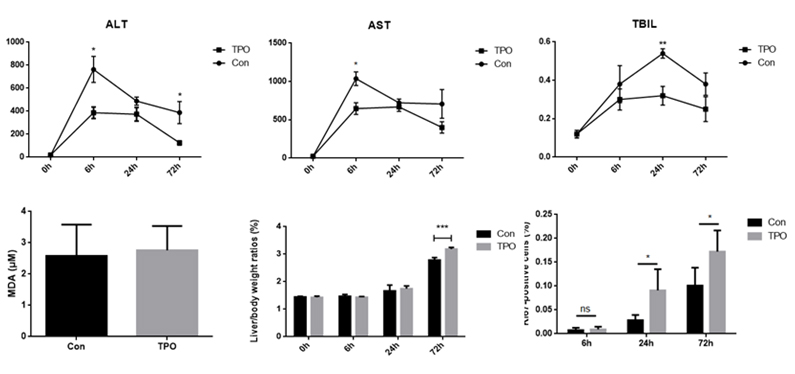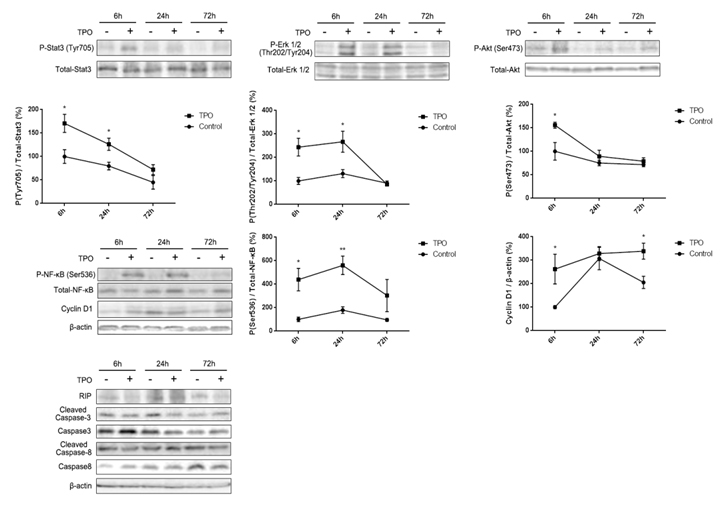Platelets Stimulate Liver Regeneration in a 30% Partial Liver Transplantation Model in Rat
University of Tsukuba, Tsukuba, Japan
Meeting: 2020 American Transplant Congress
Abstract number: A-369
Keywords: Graft survival, Liver grafts, Living donor
Session Information
Session Name: Poster Session A: Ischemia Reperfusion & Organ Rehabilitation
Session Type: Poster Session
Date: Saturday, May 30, 2020
Session Time: 3:15pm-4:00pm
 Presentation Time: 3:30pm-4:00pm
Presentation Time: 3:30pm-4:00pm
Location: Virtual
*Purpose: Liver transplantation (LT) is one of the most definitive treatments for patients with end-stage liver disease and acute liver failure, and it has been widely accepted. After partial LT, two different processes will happen: liver regeneration and ischemia-reperfusion (I/R) injury. The functional capacity of the graft liver is to regenerate, which compensates for decreased liver volume and impaired hepatic function. In the meanwhile, I/R injury will occur. Platelets are considered to act in concert with activated Kupffer cells and leukocytes, which can be the core mechanisms for regeneration and I/R injury. Transient thrombocytopenia is a common phenomenon after LT, and several clinical studies have revealed that perioperative low platelet count is an independent risk factor for poor outcomes after LT. Recent studies highlighted that platelets have strong effects on promoting liver regeneration. However, these studies are based on partial hepatectomized model, and the results in LT haven’t been thoroughly investigated. The aim of our study was to identify the role of platelets in liver graft and its outcomes after partial LT.
*Methods: We used a 30% partial liver transplantation (LT) rat model to conduct this study. Eighty-week Lewis rats were subjected to 30% partial LT with phosphate-buffered saline administration (control) or 30% LT with thrombopoietin administration (PLT). The groups were evaluated for liver regeneration.
*Results: The serum levels of AST, ALT and TBIL decreased significantly in the TPO group compared with the control group, and the regeneration-related factors including liver/body weight ratio, Ki-67 positive cells ratio was significantly higher post-LT in the TPO group (Figure.1). In western blot, the phosphorylation of Stat3, Akt and Erk 1/2 all increased significantly in the TPO group after partial LT (Figure.2). The proliferative protein, cyclin D1, increased significantly in the TPO group, and the apoptosis pathways had no change after TPO treatment (Figure.2).
*Conclusions: Our results indicate that platelets stimulate liver regeneration without aggregating I/R injury after partial LT in rat, and we are to further investigate the mechanism in the future studies.
To cite this abstract in AMA style:
Takahashi K, Liang C, Ohkohchi N, Oda T. Platelets Stimulate Liver Regeneration in a 30% Partial Liver Transplantation Model in Rat [abstract]. Am J Transplant. 2020; 20 (suppl 3). https://atcmeetingabstracts.com/abstract/platelets-stimulate-liver-regeneration-in-a-30-partial-liver-transplantation-model-in-rat-2/. Accessed December 21, 2025.« Back to 2020 American Transplant Congress


